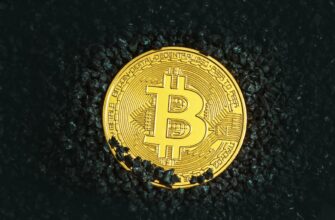- What Is Cryptocurrency Slippage and Why Should You Care?
- How Slippage Works in Crypto Trading: A Step-by-Step Breakdown
- Top 5 Causes of Crypto Slippage
- How to Calculate Slippage: The Simple Formula
- 7 Proven Strategies to Minimize Crypto Slippage
- Slippage in Different Market Conditions: Bull vs. Bear Markets
- Cryptocurrency Slippage FAQ
- Is slippage always bad?
- Which crypto assets have the highest slippage risk?
- Do centralized exchanges have less slippage than DEXs?
- Can slippage be negative?
- How does slippage affect DeFi yield farming?
- What’s a safe slippage tolerance setting?
- Does slippage occur in spot AND derivatives markets?
What Is Cryptocurrency Slippage and Why Should You Care?
Cryptocurrency slippage occurs when the execution price of your trade differs from the expected price at the moment you placed the order. This common phenomenon in crypto trading happens due to market volatility and liquidity gaps between order placement and fulfillment. While minor slippage might seem negligible, it can significantly impact profitability during high-frequency trading or large-volume transactions. Understanding slippage is crucial for traders, DeFi users, and liquidity providers to optimize entry/exit points and minimize unexpected losses.
How Slippage Works in Crypto Trading: A Step-by-Step Breakdown
When you initiate a trade on an exchange or DEX (Decentralized Exchange), the process involves:
- Order Placement: You request to buy/sell at a specific price based on current market data.
- Market Shift: Between order submission and execution, prices fluctuate due to trading activity.
- Execution Variance: The exchange fills your order at the best available price, which may be higher (for buys) or lower (for sells) than expected.
- Slippage Realization: The difference between requested and executed prices becomes your slippage cost.
Example: If you try buying ETH at $1,800 but get filled at $1,805 due to sudden demand, you experience 0.28% positive slippage (costing extra).
Top 5 Causes of Crypto Slippage
- Low Liquidity: Thin order books in lesser-known tokens mean fewer orders to match against, amplifying price impact.
- High Volatility: News events or whale movements cause rapid price swings during trade execution.
- Large Order Sizes: Big transactions exhaust available orders at desired prices, forcing partial fills at worse rates.
- Slow Network Congestion: On blockchains like Ethereum, delayed transaction processing allows market conditions to change.
- Exchange Mechanics: Market orders prioritize speed over price, while limit orders avoid slippage but risk non-execution.
How to Calculate Slippage: The Simple Formula
Slippage is expressed as a percentage using this calculation:
Slippage % = [(Execution Price − Requested Price) / Requested Price] × 100
Example Calculation:
Requested Buy Price: $50.00
Actual Execution Price: $51.50
Slippage = [(51.50 − 50.00) / 50.00] × 100 = 3%
Negative slippage benefits sellers (executed higher than expected), while positive slippage costs buyers.
7 Proven Strategies to Minimize Crypto Slippage
- Use Limit Orders: Set maximum/minimum acceptable prices to cap potential losses (though orders may not fill).
- Trade High-Liquidity Pairs: Stick to major tokens like BTC or ETH with deep order books on centralized exchanges (CEXs).
- Split Large Orders: Divide big trades into smaller chunks using TWAP (Time-Weighted Average Price) strategies.
- Adjust Slippage Tolerance: On DEXs like Uniswap, manually set slippage limits (e.g., 0.5% instead of default 1-3%).
- Avoid Volatile Periods: Steer clear of trading during major news events or market openings.
- Leverage DEX Aggregators: Use 1inch or Matcha to scan multiple liquidity pools for better rates.
- Monitor Gas Fees: Higher fees prioritize transaction execution, reducing delay-related slippage.
Slippage in Different Market Conditions: Bull vs. Bear Markets
Bull Markets: High buying pressure often causes significant positive slippage for buyers. Sellers may experience negative slippage (favorable) as bids surge.
Bear Markets: Panic selling leads to negative slippage for sellers. Buyers benefit from unexpected price drops during execution.
Stable Markets: Slippage is minimal in sideways-trading environments with balanced liquidity.
Cryptocurrency Slippage FAQ
Is slippage always bad?
No. Negative slippage benefits traders (e.g., selling above requested price). Positive slippage costs buyers but helps sellers.
Which crypto assets have the highest slippage risk?
Low-cap altcoins and new tokens typically exhibit higher slippage due to shallow liquidity pools compared to Bitcoin or Ethereum.
Do centralized exchanges have less slippage than DEXs?
Generally yes—CEXs like Binance aggregate more liquidity. However, advanced DEXs with concentrated liquidity (e.g., Uniswap V3) can reduce slippage significantly.
Can slippage be negative?
Yes. Negative slippage means better-than-expected execution (e.g., buying below your limit price). It’s advantageous for traders.
How does slippage affect DeFi yield farming?
High slippage when entering/exiting LP positions erodes yields. Always calculate “impermanent loss + slippage” to assess true ROI.
What’s a safe slippage tolerance setting?
For stablecoins: 0.1-0.5%. For volatile assets: 1-3%. Adjust based on real-time volatility using tools like CoinGecko volatility charts.
Does slippage occur in spot AND derivatives markets?
Primarily in spot markets. Derivatives like futures use mark prices, reducing slippage risk through leverage mechanisms.
Mastering cryptocurrency slippage management transforms it from a hidden cost into a controllable variable. By implementing these strategies, you’ll trade smarter—preserving capital whether you’re swapping tokens or providing liquidity.








